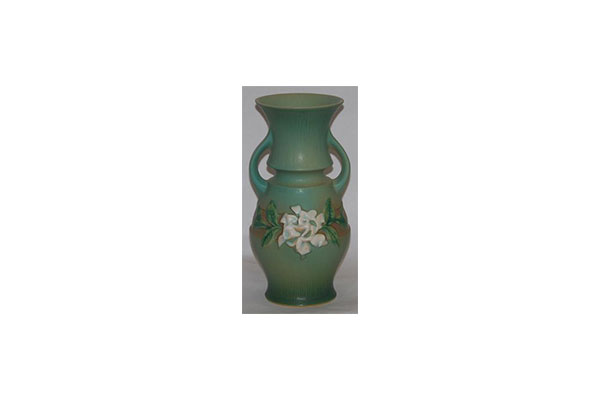 Following World War II, everything people knew – or thought they knew – changed dramatically. The art pottery world was no different. One of the most challenging changes was a 1946 Supreme Court ruling that had Roseville Pottery concerned over labor wages.
Following World War II, everything people knew – or thought they knew – changed dramatically. The art pottery world was no different. One of the most challenging changes was a 1946 Supreme Court ruling that had Roseville Pottery concerned over labor wages.
It was a common practice for potteries to "round down" working hours when figuring time cards. For instance, time was docked for activities such as walking from the time clock to one's work area, changing into uniforms or coveralls or any other activities spent preparing for the job each day. The Supreme Court ruled another pottery company, Mt. Clemens Pottery, would have to pay retroactive overtime because of its practices. Naturally, this made all other potteries more than a little uncomfortable. The country was, after all, rebuilding after a devastating war. For some companies, being forced to retroactively pay its employees equated to closing the doors.
But it wasn't just domestic issues that concerned Roseville Pottery. Now that the war was over, other countries began exporting art pottery into America. The competition was incredible. The biggest threat was Japan and Germany. Many American potters felt as though the U.S. Government was encouraging these imports; and indeed, it was. While the government was attempting to rebuild its financial structuring, that meant imports would have to once again resume.
Roseville Pottery's response was to increase its advertising efforts by an additional ten thousand dollars per month. It also began producing more contemporary, or modern, pieces in an effort to attract younger clients. The company leaders were wise in their efforts however. No one wanted to alienate those loyal clients who preferred the more traditional pieces. The advertising efforts paid off. Booklets began appearing; complete with full color photographs, which showcased the newer Roseville pottery floral lines, including such popular patterns as Apple Blossom, Bittersweet, Foxglove, Zephyr Lily and Snowberry.
While other companies played it safe, Roseville pottery moved forward with an aggressive advertising campaign that ensured its stability through difficult times. Eventually, however, it became clear Roseville Pottery was nearing its end.
In April, 1954, just before Roseville Pottery went out of business, then-President Windisch reported the company had approximately $5000 on hand in cash, $40,000 in its accounts receivable ledger and in what was referred to as "unshipped business", the company had $35,000. All total, the inventory was valued at $109,000. The company was losing money during those first few months in 1954 and had many accounts that they could not collect on.
Incredibly, "the molds, blocks, cases, master dies and designs, together with lists of the accounts  which have heretofore purchased Roseville art pottery and the registered trade mark "Roseville", as well as the right to continue selling under the Roseville name was sold for $100 to Georgianna and Robert Windisch. The board of directors considered the $100 payment "in excess of the value of assets". With that one declaration, Roseville Pottery would never again exist in its previous manner.
which have heretofore purchased Roseville art pottery and the registered trade mark "Roseville", as well as the right to continue selling under the Roseville name was sold for $100 to Georgianna and Robert Windisch. The board of directors considered the $100 payment "in excess of the value of assets". With that one declaration, Roseville Pottery would never again exist in its previous manner.
Search through Just Art Pottery's Roseville Pottery inventory by pattern or shape and don't forget to sign up for the Just Art Pottery newsletter.
Donna McGill – Just Art Pottery


